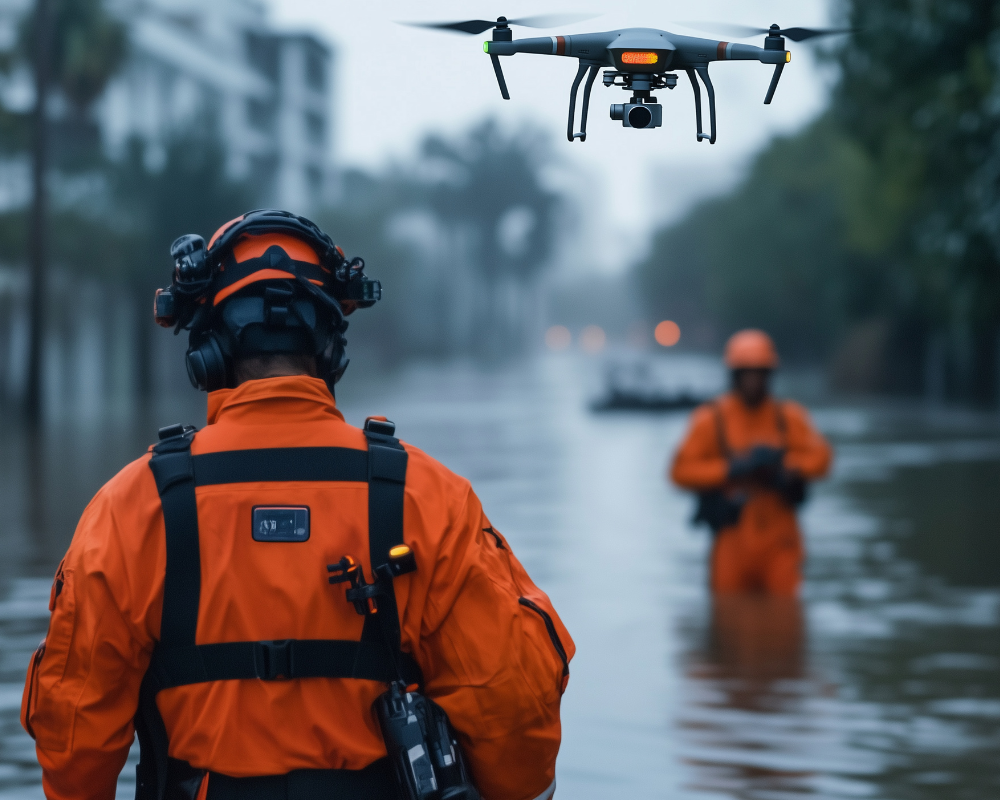
LEO (Low Earth Orbit) satellite networks, such as Starlink and OneWeb, provide critical connectivity during hurricane response by offering an alternative communication system when terrestrial networks are compromised.
Here’s how LEO satellites contribute during such crises:
1. Bypassing Ground Infrastructure Failures
During hurricanes, communication infrastructure such as cell towers, fiber lines, and power grids are often damaged or destroyed. LEO satellites, however, are unaffected by these ground-based disruptions. Operating at altitudes of 500 to 2,000 km, they can provide connectivity directly from space to ground stations or user terminals without relying on damaged infrastructure.
2. Low-Latency Communication
LEO satellites orbit much closer to Earth than traditional geostationary satellites, significantly reducing the time it takes for signals to travel between the satellite and the ground. This lower latency allows for real-time communication, which is crucial for coordinating rescue efforts, monitoring conditions, and responding to rapidly changing situations in hurricane-stricken areas.
3. Portable Satellite Terminals for First Responders
Portable ground terminals that can connect to LEO satellite constellations are often deployed in disaster zones. These terminals can be set up quickly and are capable of providing broadband internet and communication services, ensuring that first responders, humanitarian organizations, and emergency services can remain connected, even when local infrastructure is unavailable.
4. Connectivity for Remote or Hard-to-Reach Areas
In remote or isolated areas where terrestrial communication networks may be nonexistent or destroyed, LEO satellites offer the only means of connectivity. For coastal regions, islands, or rural areas hit by hurricanes, LEO constellations like Starlink or OneWeb can provide internet access, enabling emergency teams to coordinate relief efforts in locations that would otherwise be cut off.
5. Support for Emergency Command Centers
LEO satellites can provide high-speed internet and communication capabilities for temporary emergency command centers. These command centers are the hubs from which hurricane response is coordinated, and they need robust, reliable connectivity to communicate with multiple agencies, track weather data, monitor rescue operations, and direct resources.
6. Enabling Real-Time Updates and Alerts
With LEO satellite connectivity, emergency services can send real-time updates, warnings, and alerts to the public and responders in the affected area. This helps with timely evacuations, coordination of rescue operations, and dissemination of critical safety information, particularly in situations where local networks are down.
7. Data Transmission and Monitoring
LEO satellites can relay real-time data from sensors, drones, and other monitoring devices in hurricane-affected areas. These data streams help authorities monitor flood levels, wind speeds, damage assessments, and other key metrics, enabling a more informed and coordinated response.
8. Public Communication and Aid
In disaster-stricken communities, LEO satellite connectivity allows affected populations to reconnect with the outside world. People can use satellite-enabled internet services to contact loved ones, access social media for updates, or receive instructions from local authorities on evacuation routes, aid distribution points, and relief measures.
9. Blended Connectivity
Blended connectivity combines different communication technologies, such as satellite, cellular, Wi-Fi, and terrestrial cable. Once cellular networks are restored, Tactical IP BLEND combines LEO satellite and available cellular carrier networks into one large bandwidth pipe. This connection is secure, reliable and resilient, giving First Responders the connectivity they need to operate.
Connect with PEAKE to learn more about how LEO Connect and Tactical IP BLEND can help provide connectivity during your agencies most critical times.
